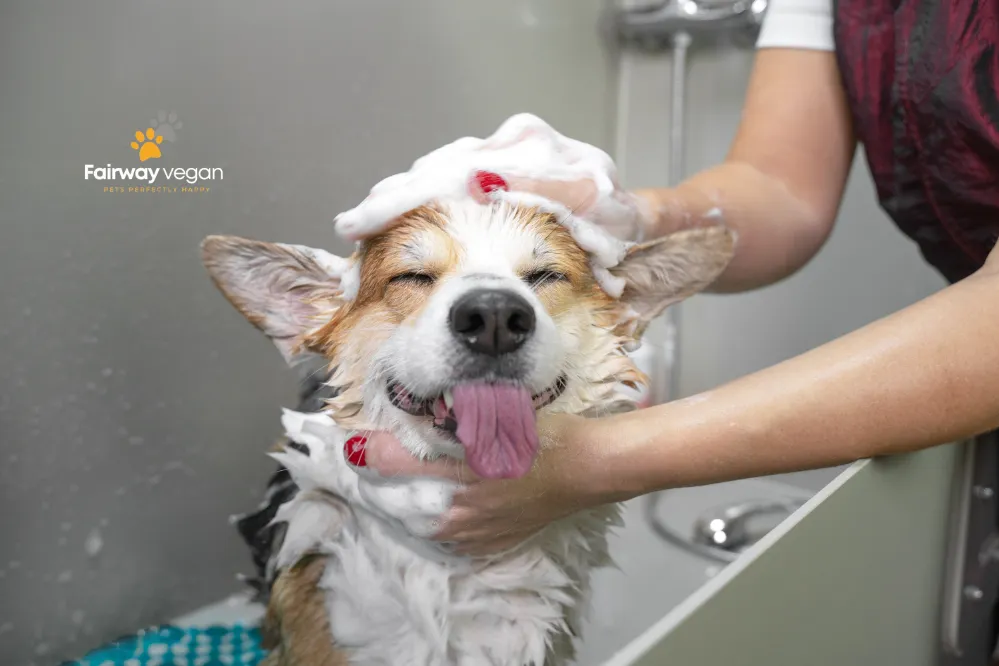
Are you concerned about how your senior dog will react to the addition of a new kitten to your family? Don’t worry, you’re not alone! Numerous families have been through the stage where they were worried about how to introduce their senior dog to a kitten and successfully made the switch and continued living happy, furry lives. Some even keep their kittens in cat backpacks with bubble window to introduce a safe space.
That said, it might take some persistence and smart planning, but it is possible. Also, the dog will determine this! It could take a few weeks for some dogs to become used to a new member, while others won’t need any time at all.
Imagine all of those double cuddles! Here’s a happy and safe way to do it.
How To Introduce a Kitten To a Dog?

A kitten should ideally be introduced to a dog between the ages of 8 and 12 weeks because this is when they are most likely to socialize and become accustomed to other animals.
Regardless of age, you should always make sure the kitten is at ease in their new surroundings before introducing them to the dog, and you should always introduce them gradually and under supervision.
1. Begin Introducing Kittens To Dog
Try letting them sniff each other on the first day from opposite sides of a door if you can’t do this beforehand.
Your new kitten should have a bed, food, drink, and litter in a tiny bathroom or laundry room. “This will enable the dog to become accustomed to the new cat’s scent and help them adjust to the new space,”
2. Ensure that the cat always gets access to a place free of dogs.
Sanctuary spaces must have a safe entrance and ceiling, although they may be any size. A litter box, a scratching post, water, a food dish, and toys should all be present in the area.
You may also need some time alone to litter train your kitten if it’s 3 weeks older atleast.
Make sure the area is cat-proof by tying up or concealing cables, and eliminating any toxic plants, medications, and breakable trinkets.
To make the cat feel secure, you may also create some tunnels or hiding spots. It is best to introduce your kitten to a cat backpack or cat carrier at a young age.
For the following several weeks, if not longer, be ready to handle the relationships between your dogs.
To enable your cats to quickly flee the dog if necessary, your living spaces should ideally feature many high spots, such as furniture or storage.
3. Keep the pets apart for some time.
For at least the first three to four days, keep the pets apart.
Wait until your new pet has had a checkup with the veterinarian and has been deemed healthy before establishing any interaction.
Keep your new pet sequestered on a different level of your home or in a sanctuary room with the door locked. Allowing the pets to acclimate to one another’s presence without direct interaction is the aim. They are able to hear and smell one another even if they are unable to sight one another.
4. On each side of a closed door, feed them.
Teaching them to link the other pet’s presence to enjoyable things, such as food, is the goal. To introduce a senior dog to a kitten, move their food bowls a little closer to the closed door with each feeding while your senior dog superfood may look attractive to your kitten. Keep doing this until every pet is able to feed peacefully near the door.
5. Train your senior dog and kitten
Start teaching your new dog basic obedience signals like “sit” and “down” if he’s a dog. Make training brief, enjoyable, and rewarding for the dog.
6. Start slow and remain persistent while introducing kittens to dog

Meet and greets should be held in a shared space of the home after your dogs are able to dine peacefully close to the door. The sanctuary area for any animal should not be used.
The first sessions should be brief and serene. Let the cat come and go as he pleases, and keep the dog on a leash. If either pet acts violently, you risk hurting them if you hold them in your arms.
To encourage calm behavior, ask the dog to sit and give him little, delicious snacks. Give your cat goodies, you can choose one of chewy’s pet products. If either pet acts aggressively, gently divert and reroute them. Call the dog’s name to get his attention, or toss the cat a toy to get him out of the room. Put the animals back in their enclosures.
7. Repeat the sessions every day.
Do these in-person meetings every day. Your dogs’ favourite goodies should only be given when they are together. Allow the cat to exit the room if he tries, but don’t let the dog follow him. Aim to conclude each session before your pet becomes agitated or aggressive.
8. Let your senior dog and kitten run wild together.
Allow the animals to roam freely in the same room after they seem to be getting along. Make sure the dog’s leash is fastened and dragging on the floor so you can step on it and stop him from pursuing the cat if he becomes agitated.
Return to the previous introductory stages and repeat the procedure if tension arises. Ensure that the cat always has access to a sanctuary room that is dog-proof.
Be cautious as you go.
9. When you are not around to monitor, keep the pets apart.
It’s important to maintain reasonable expectations when you introduce the senior dog to the kitten. It’s possible that your two pets won’t become best friends straight once, and you may need to keep your young kitten apart until he gets older. Your dog and cat will get along well if you are prepared and patient, however it can take some time.
10. Begin with supervised visits gradually.
Ask a trainer or behaviourist for assistance if you see a behavioural issue in your cat and additional information on how to properly and joyfully introduce your dog to your new kitten. Then, prepare yourself for all the wagging tails and cute purrs that will follow.
Recent Comments

Top 10 Most Popular Dog Breeds in the UK

Displacement Behavior in Dogs; 5 Signs and Ways to Respond

How to Introduce Senior Dog to Kitten? 10 Steps Guide

How to Remove Pet Hair from Furniture: 5 Hacks That Work

How To Groom a Dog At Home For Beginners

The Ultimate Guide to Mobile Pet Grooming: Prices, Services, and Benefits

